|
|
|
|
#1
|
|||
|
|||
|
Hit the search button. There was an extenisve thread about 2 years ago on this. I think Doug Goodman contributed a lot of info.
|
|
#2
|
|||
|
|||
|
This is the second appearance here for this card. He shows up in a prior thread thanks to Doug. Doug will be pleased to know his card has company. I have a similar blue Mays from 1966. Could be a print defect. Could be a sunlight issue
|
|
#3
|
||||
|
||||
|
Thanks guys - my cursory search didn't return any results on this, so thanks for mentioning. Here is an old thread on the same topic:
http://www.net54baseball.com/showthread.php?t=133119 I think this begs the question though: why ISN'T this a recognized variation? If cards like the "Herrer" from the '58 set or the Gene Bakep in '57 can be recognized variations, then why not a significant issue (not a print dot) like a totally different colored background be considered and recognized as a variation? I'd love to hear from others - we now have at least three of these Aaron cards like this, and I'm sure there are more - what is enough to constitute a variation, if the answer is not three? Last edited by scooter729; 12-13-2012 at 06:30 PM. |
|
#4
|
||||
|
||||
|
Here is one on Ebay right now...and no one bidding. Interesting read from the link, pretty cool.
http://www.ebay.com/itm/1958-Topps-3...item5899a88197 The seller has no idea it might be special... |
|
#5
|
|||
|
|||
|
The Herrer and Bakep were recognized as variations years ago before the days of ebay scans which have revealed hundreds of similar print defects, front and back, in virtually every baseball card set. I think similar print defects now normally get very little recognition. But there are exceptions, usually the result of someone being persistent.
My source for getting variants recognized used to be Bob Lemke at SCD, who has now retired, and over time, with the proliferation of additional "finds" on ebay, Bob's definition of what he would list in SCD got more restrictive. He even took many prior listed variations out of the book. Border gaps come to mind. I do not think the Herrer or Bakep, or maybe even the Campos black star would make the cut today. But they are now part of hobby history. On the other hand, PSA has now recognized in slabs and in their master registry list for 1961 Topops a Ron Fairly card with an errant green print smudge on the back of the card within the baseball. This print defect exist on other 1961 Topps cards as well...but so far not recognized. If one's definition of a variation of a variation is a card that the producer intentionally changed for some reason, such as the Topps 1958 option/trade or not cards, then none of these print defects would make the cut. But no one definition prevails out there. I think there has been some doubt on the Aaron as to whether it was a defect in a print run, which would lead to a small number of them out there, or was caused by sunlight fading. Finding more of them lends to it being a print defect, but not necessarily a variation...again depending on your ( or someone's) definition. Print defects are endless out there Still, if PSA is going to recognize the Fairly as a variation, the door seems wide open. Maybe you should submit it along with information on other examples form threads like this and see what they do. 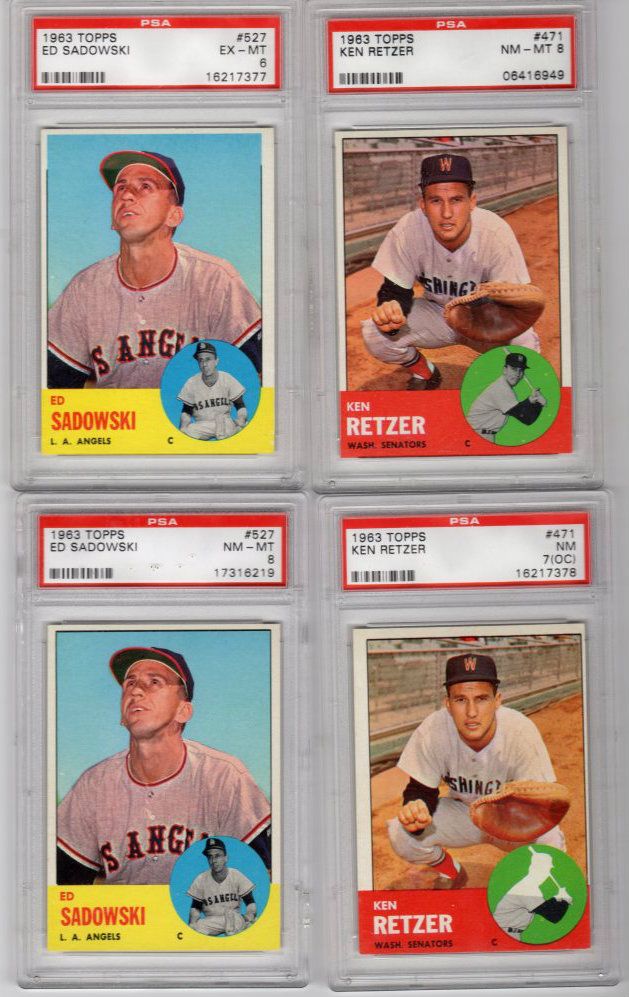 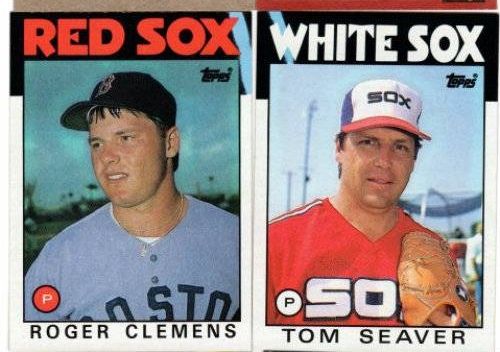 [IMG] 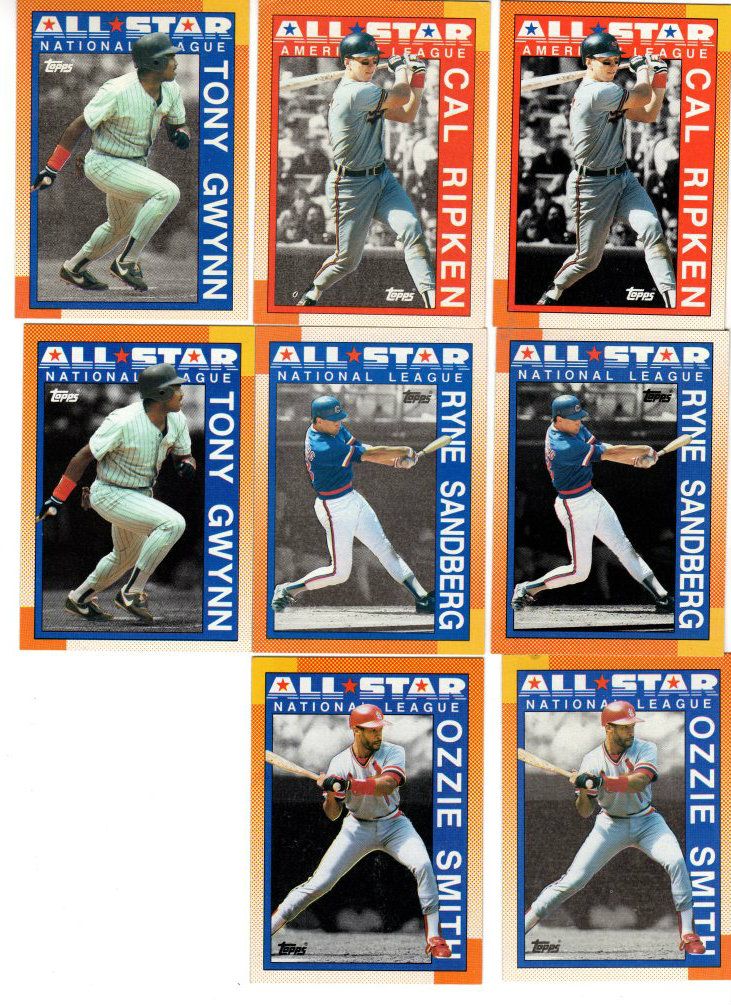 [/IMG] [/IMG]  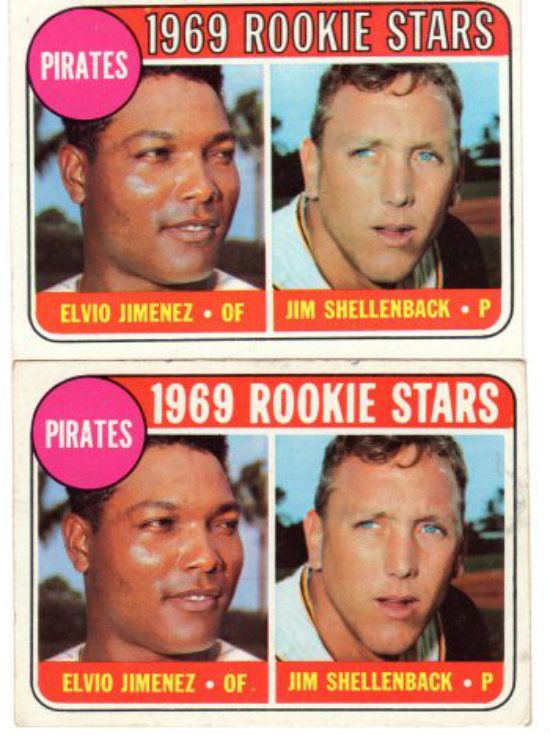 
Last edited by ALR-bishop; 12-14-2012 at 07:55 AM. |
|
#6
|
|||
|
|||
|
I like that 69 rookie stars card!
Some of the variations that are recognized are indeed just printing mistakes. And there are some that aren't recognized that are differences on the printing plate. Some from damage, some from mistakes in making the plate. That's how I define a variation, a difference caused by the plate being different. There aren't many people that go with that for good reason. With the access to the internet images a vast number of differences get noticed. Unfortunately, lots of the ones listed on Ebay are just transient print defects. And that added to how inconsequential most of the actual ones are makes collecting them seem silly to many collectors. The Thomas NNOF is a mistake in making the plate, somewhere along the line a chunk of debris got between the mask (negative) and the plate causing missing areas. The top two cards could be similar, or might just be cards where a bit of paper or something got into the press and blocked the black layer. I'm working at typing up a list of variations for 81 topps. Nearly all of them really trivial, but actual plate differences. (I had lots of time, and about 15 thousand of the things to look through. ) The Blue Aarons might be fading, but usually either the red goes first or the colors fade a bit more evenly. If they're not fading then it's just a missing color. A nice and really interesting print error, but not a variation even by my loose standards. Steve B |
|
#7
|
|||
|
|||
|
I have a lot of respect for Steve's opinions on this stuff., although I lean to defining true variations as cards the producer intentionally changed, even though I tend to collect any significant or interesting print defects as well
Here is something similar to the blue Aaron in a 66 Mays. It would be helpful to see the back of the Aaron as well 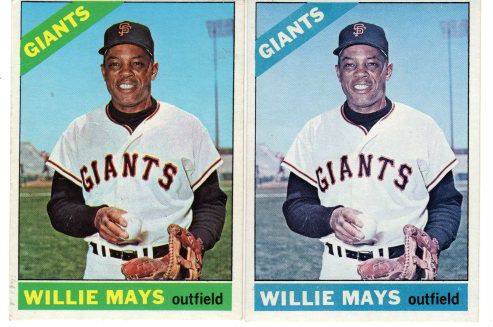 
|
 |
|
|
 Similar Threads
Similar Threads
|
||||
| Thread | Thread Starter | Forum | Replies | Last Post |
| 1958 Topps Autographed Mickey Mantle & Hank Aaron PSA-DNA Certified | DixieBaseball | 1950 to 1959 Baseball cards- B/S/T | 0 | 04-29-2011 09:47 AM |
| FS: 1958 Topps HANK AARON (White) SGC 3 - SOLD! | bobbyw8469 | 1950 to 1959 Baseball cards- B/S/T | 3 | 04-09-2011 03:37 PM |
| FS: 1958 Topps Hank Aaron SGC 84 --- SOLD | Anthony S. | 1950 to 1959 Baseball cards- B/S/T | 1 | 06-01-2009 02:56 PM |
| Who Posted the 1958 Topps Aaron with Blue Background? | Archive | Net54baseball Vintage (WWII & Older) Baseball Cards & New Member Introductions | 0 | 05-27-2007 05:50 AM |
| I need a 1958 Topps Hank Aaron (White Letter) | Archive | 1920 to 1949 Baseball cards- B/S/T | 1 | 04-12-2006 06:14 PM |